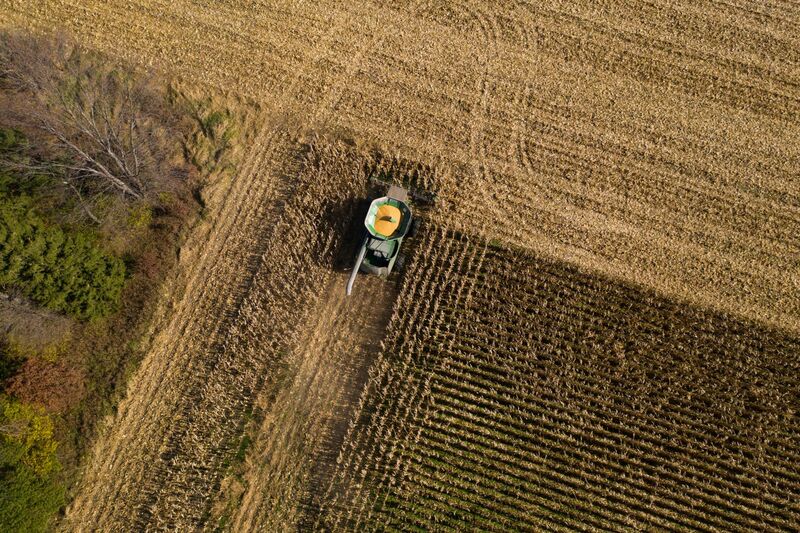
This week highlighted one of my favorite inverse correlations in the grain market. This one has been missing from the market structure the last couple of years, but I knew it was bound to return eventually.
Angst over speculator participation and USDA information moves significantly higher, the lower prices move.
Working with farmers, I get it and understand the frustration. There are so many factors influencing profitability that are entirely out of their control. There are so many complicated decisions that feel as though they must be made on the fly, it can be overwhelming at times.
Toss in folks rabble rousing about speculator participation or USDA misinformation to garner attention and it is almost too much to bear.
However, I believe that if a producer or market watcher takes the time to recognize the role of both speculators and the information the USDA provides when it comes to market influence and managing risk, they will be much further ahead in the long run.
Speculator and market maker participation is what makes the commodity markets an efficient tool for price discovery. The last thing a producer wants is a thin market dominated by end users. If you think the market is rigged now, imagine what it would look like if it were simply made up of producers, the ABCDs and a handful of small elevators or end users.
Market depth is crucial, and the more participants you have in a market, the more opportunities it tends to provide. The idea that we would want to remove speculators from the market is a prime example of cutting one’s nose off to spite their face. Learning to watch what the speculators and other market participants are watching and trying to pay attention to the information they are trading on at any given moment proves to be far more valuable.
In addition to complaints over speculator participation now that they have again moved to an overall short position in grains, I have seen many speak poorly of the information the USDA provides. While this isn’t new, it always catches me off guard just a bit as I know of no greater pool of researchers or cache of historical data than what the USDA has at its disposal.
As in the case of speculators, I feel there is a misunderstanding of the role the information provided by the USDA can play when looking at market direction and managing risk.
Of course, I have had my fair share of being caught off guard by a USDA update. There have been plenty of times where the information has come in incredibly differently than expected and I myself have uttered more than my fair share of curses. This fact alone tells me the USDA does not adjust to market expectations; it works to provide as comprehensive of an outlook possible with the information they have at their disposal at that time. As I said before, show me any private group with more information at their fingertips than the USDA.
When it comes to understanding the role of USDA reports in price discovery, I think it’s best to first recognize which reports provide value and new insight, while knowing which ones can be mostly ignored. Learning how the information is compiled and the factors that go into any adjustments we see throughout the year provides valuable insight as well.
The timeline of a crop when viewed solely through USDA reports starts with the planted acreage figure released at the end of March every year. The data released in this report is based on farmer surveys and historical tendencies in each state when it comes to planted acreage.
The March acreage figure combined with trendline yield estimates will shape the supply side of the USDA’s new crop outlook until planted acreage is updated at the end of June or NASS updates yield in their August outlook—barring any extenuating circumstances.
In the past, the USDA waited until October to update acreage figures if there were signs it needed to be changed when looking at data released by the FSA. The FSA is the arm of the USDA where the farmer reports all acres planted to meet crop insurance and farm program requirements. Because of the role the FSA plays getting the data at ground level, their update provides information to support or reject the figures put together earlier in the year from farmer surveys.
With the modernization of reporting, the USDA announced last year that the August FSA data is comprehensive enough to be used in September updates, something that was seen in the acreage adjustments last week.
In addition to the supply projections put together from surveys, historical data and a whole host of other resources, the economists at the USDA put together their outlooks for demand. What is best about these demand projections is once the crop year starts the USDA transitions from a role of forecaster to one of reconciliation.
When speaking of reconciliation, I’m talking about all the reports released throughout the month and year helping us to see whether the actual figures match USDA expectations.
While quarterly stocks reports are the first reports I think of when it comes to major reconciliation, the average market watcher can start to reconcile USDA demand forecasts by watching a whole host of reports—both USDA and non-USDA.
Export inspections each Monday give us insight into how many bushels have shipped each week, while ethanol grind numbers released on Wednesday give an idea of how much corn went into ethanol. Export sales are released each Thursday, while soybean crush figures are updated once a month by both industry groups and reconciled by the USDA. The only major demand sector not to have a usage report released once a week or even once a month is feed.
Long story short, adjustments to demand projections higher or lower once we are in the marketing year should not come as a surprise if you’re tracking physical markets and true demand.
Don’t take what I’m saying here the wrong way by any means, different opinions are what makes the market. But when I look back over my career and all that I have experienced when it comes to helping farmers manage risk, recognizing and accepting the role every market participant plays in price discovery has helped reduce the frequency of emotion fueled decision making substantially.
Other things I am watching this week:
· Ukraine looks to be making their planned humanitarian corridor a reality, with grain ships reportedly heading to Odesa and surrounding ports for loading. There were rumors late in the week last week that China was booking Ukrainian corn for October forward.
· Russia’s response to Ukraine’s corridor. I’m also watching Russian wheat business; with reports they are working on a phyto deal that would allow for Chinese imports. India denied they were looking to purchase 8-9 mmt of Russian wheat, choosing instead to release domestic stocks.
· Chinese soybean demand. We are just weeks away from peak bean harvest and our new crop soybean export sales pace continues to lag significantly. Argentina’s soy dollar has led to aggressive offers by exporters there, with reports of Chinese purchases for Oct/Nov not helping US sales pace catch up any time soon.
· South American weather. Rain looks to be moving into the parts of Brazil that have been dry later in the 8-14 day forecast. Heat and dryness have had my attention recently, with a shift towards a better monsoonal flow needed to aid early bean planting. A delay in bean planting could extend the US export window or push Chinese buyers to start buying US beans more aggressively.
· Fed meeting mid-week. I feel like many businesses and households are being kept afloat on the idea a pivot is soon to come. What happens if Powell follows through on higher for longer and we don’t see the aggressive rate cuts forecast by many to start in 2024 on the table?
· Harvest yield reports. We should start to get more yield reports as harvest pace picks up this week. Reports so far have been variable, but do not indicate any major surprises yield-wise so far.
· Freight. The Mississippi River and Panama Canal are not helping our competitiveness in the global market. Further restrictions on shipping and increases in cost are less than ideal.
I’m also holding a webinar on Friday with Lance Honig from NASS and Seth Meyer the head of the World Agricultural Outlook Board to ask any and all questions about USDA reports. Register here for a question and answer style conversation Friday morning on how they put together the numbers they release and the value they feel they have when it comes to price direction.
As always, don’t hesitate to reach out with any questions! Have a great week.
On the date of publication, Angie Setzer did not have (either directly or indirectly) positions in any of the securities mentioned in this article. All information and data in this article is solely for informational purposes. For more information please view the Barchart Disclosure Policy here.






